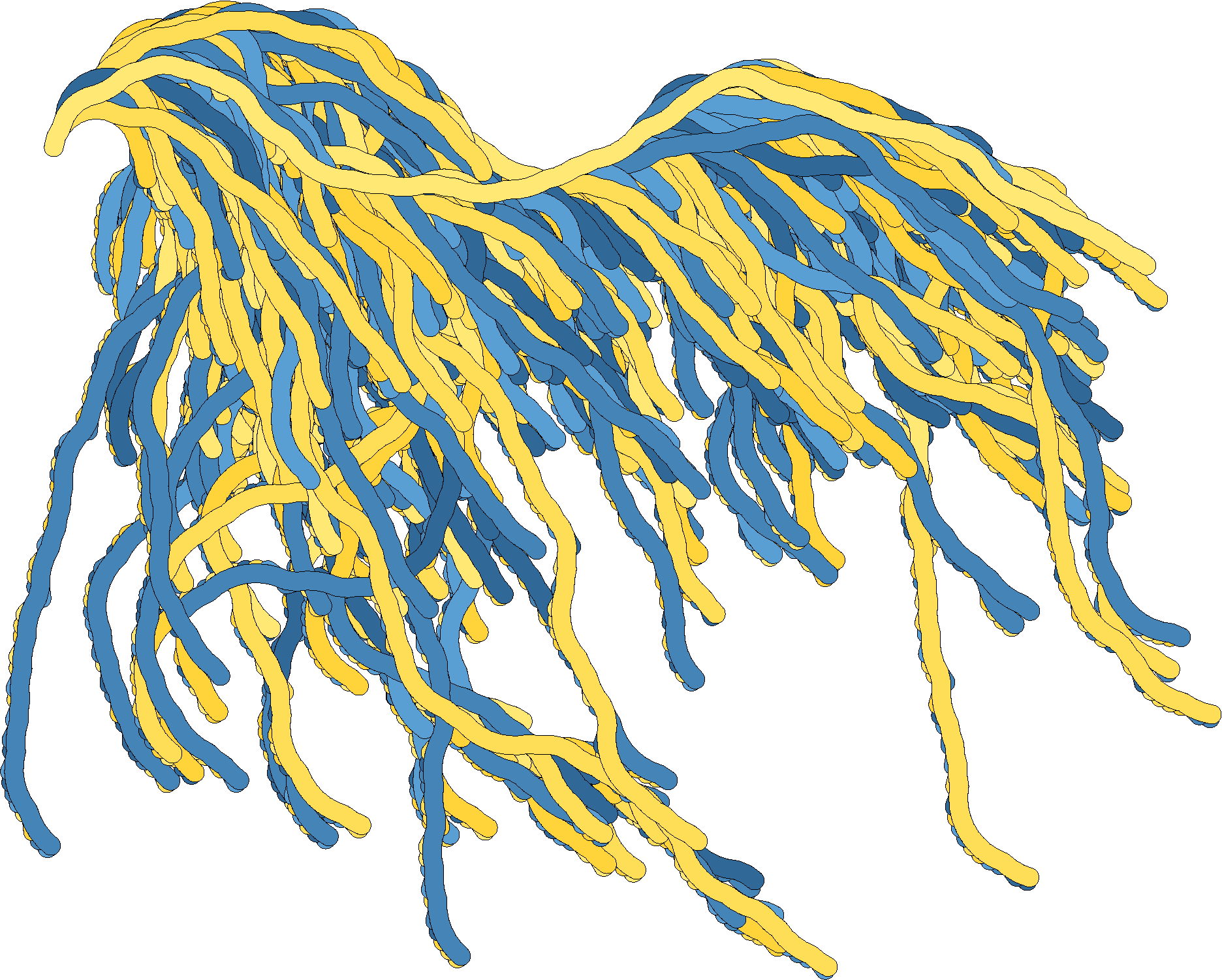Colourised Collatz Coral; derived from this original by Edmund Harriss
Functions related to the Collatz/Syracuse/3N+1 problem, implemented in Python.
To install the latest from pypi;
pip install collatzProvides the basic functionality to interact with the Collatz conjecture.
The parameterisation uses the same (P,a,b) notation as Conway's generalisations.
Besides the function and reverse function, there is also functionality to retrieve the hailstone sequence, the "stopping time"/"total stopping time", or tree-graph.
The only restriction placed on parameters is that both P and a can't be 0.
(n:int, P:int=2, a:int=3, b:int=1)
>>> import collatz
>>> # The default "Collatz function"
>>> collatz.function(5)
16
>>> # Alternatively, you can parameterise the function.
>>> collatz.function(5, P=7, a=5, b=17)
42(n:int, P:int=2, a:int=3, b:int=1)
>>> import collatz
>>> # Get the list of values that return the input.
>>> collatz.reverse_function(4)
[1, 8]
>>> # Alternatively, you can parameterise the reverse_function.
>>> collatz.reverse_function(5, P=5, a=2, b=3)
[1, 25](initial_value:int, P:int=2, a:int=3, b:int=1, max_total_stopping_time:int=1000, total_stopping_time:bool=True, verbose:bool=True)
>>> import collatz
>>> # Get the sequence of values forming the hailstone from an initial value
>>> collatz.hailstone_sequence(10)
[10, 5, 16, 8, 4, 2, 1, ['TOTAL_STOPPING_TIME', 6]]
>>> # Determines if it's in a cycle
>>> collatz.hailstone_sequence(-56)
[-56, -28, 'CYCLE_INIT', [-14, -7, -20, -10, -5], ['CYCLE_LENGTH', 5]]
>>> # The verbose messages can be muted, although this might leave a sense of ambiguity for larger lists.
>>> collatz.hailstone_sequence(-200, verbose=False)
[-200, -100, -50, -25, -74, -37, -110, -55, -164, -82, -41, -122, -61, -182, -91, -272, -136, -68, -34, -17, -50]
>>> # Although hailstones typically go to the "total stop" of 1, they can be set to terminate on the regular stop
>>> collatz.hailstone_sequence(5, total_stopping_time=False)
[5, 16, 8, 4, ['STOPPING_TIME', 3]](initial_value:int, P:int=2, a:int=3, b:int=1, max_stopping_time:int=1000, total_stopping_time:bool=False)
>>> import collatz
>>> # Reports the stopping time, the amount of iterations of the function to reach a value lower than the initial value.
>>> collatz.stopping_time(5)
3
>>> # Can be used to find the "total stopping time" as well, the amount of iterations to reach "1"
>>> collatz.stopping_time(5, total_stopping_time=True)
5
>>> # Although most cylces have a stopping time, by targetting the total stopping time, you can see if a value leads into a cycle by the 'inf' return
>>> collatz.stopping_time(-17, total_stopping_time=True)
inf
>>> # Some cycles are small enough that starting on the lowest absolute value will still identify a cycle.
>>> collatz.stopping_time(-1)
inf
>>> # If it overruns maximum stopping time, returns nothing.
>>> collatz.stopping_time(5, max_stopping_time=-1)
>>> # <None>(initial_value:int, max_orbit_distance:int, P:int=2, a:int=3, b:int=1)
>>> import collatz
>>> # See the tree graph built by a reverse function traversal, to the depth specified by max_orbit_distance.
>>> collatz.tree_graph(1, 3)
{1: {2: {4: {'CYCLE_INIT': 1, 8: {}}}}}
>>> collatz.tree_graph(1, 12)
{1: {2: {4: {'CYCLE_INIT': 1, 8: {16: {5: {10: {3: {6: {12: {24: {48: {96: {}}}}}}, 20: {40: {13: {26: {52: {17: {}, 104: {}}}}, 80: {160: {53: {106: {}}, 320: {640: {}}}}}}}}, 32: {64: {21: {42: {84: {168: {336: {672: {}}}}}}, 128: {256: {85: {170: {340: {113: {}, 680: {}}}}, 512: {1024: {341: {682: {}}, 2048: {4096: {}}}}}}}}}}}}}}
>>> # Can also be parameterised;
>>> collatz.tree_graph(1, 2, P=5, a=2, b=3)
{1: {-1: {-5: {}, -2: {}}, 5: {'CYCLE_INIT': 1, 25: {}}}}git clone https://github.com/Skenvy/Collatz.git && cd Collatz/python && make venv
make buildwill test and build the wheel and force reinstall it into the local venv, to test the built distribution
